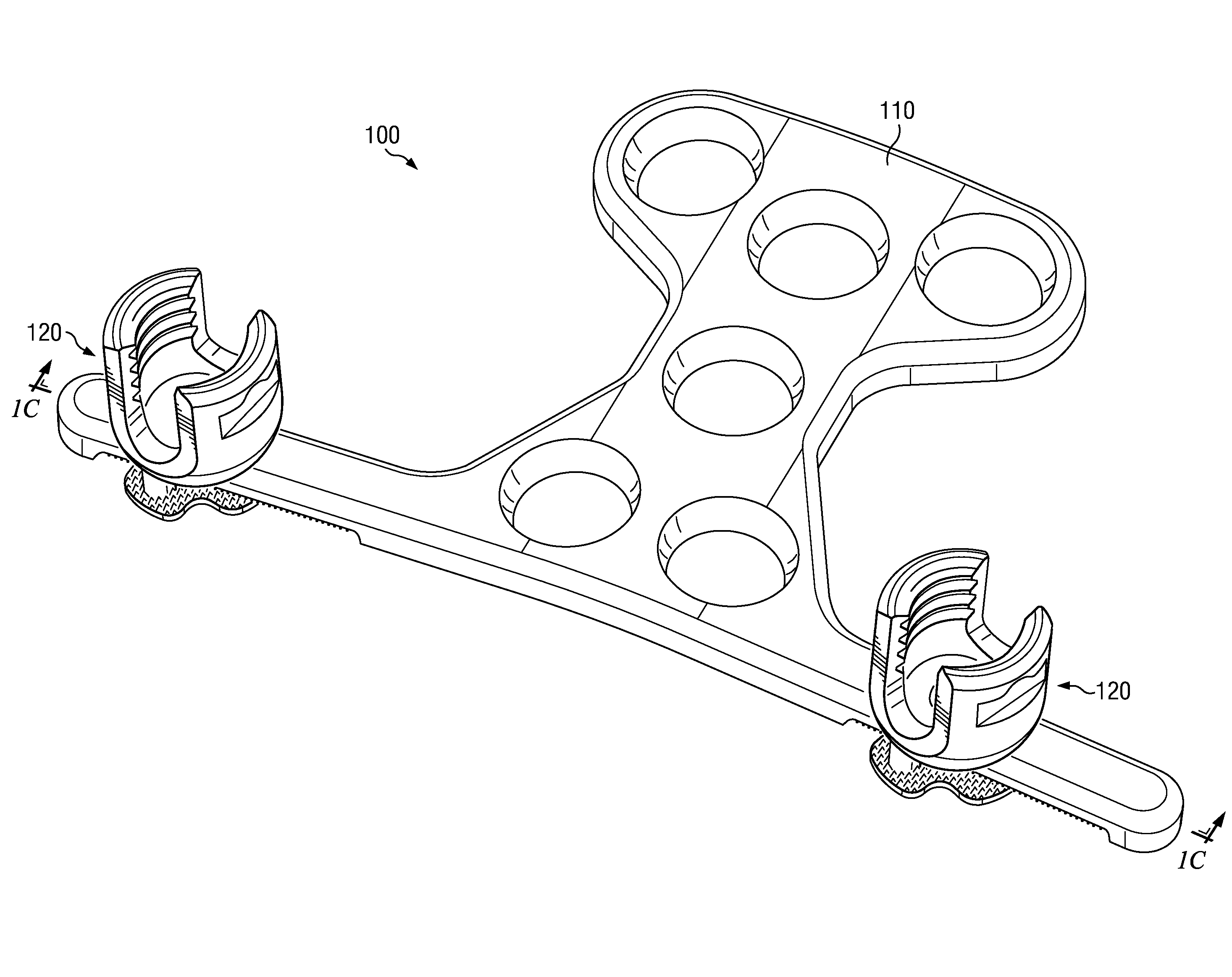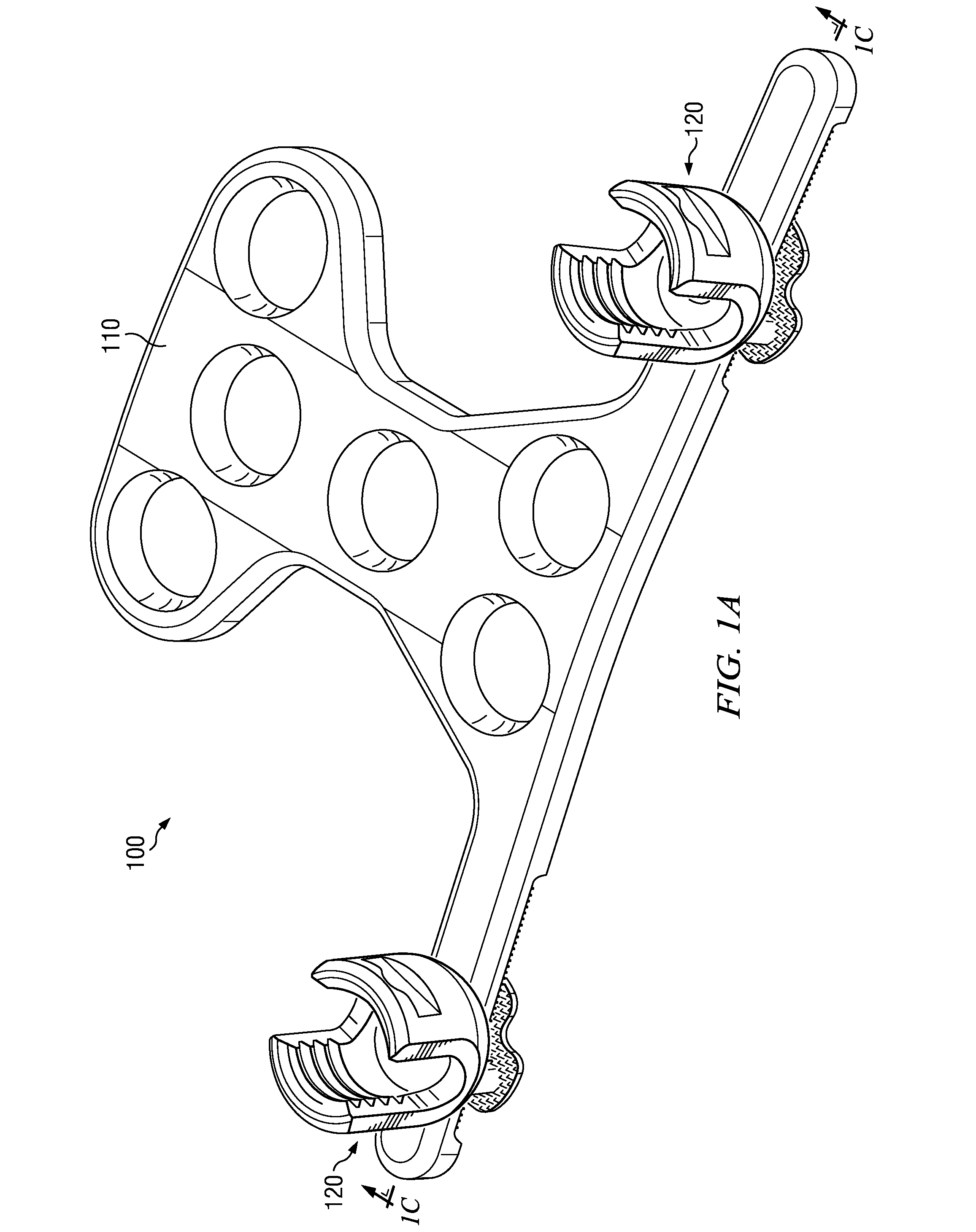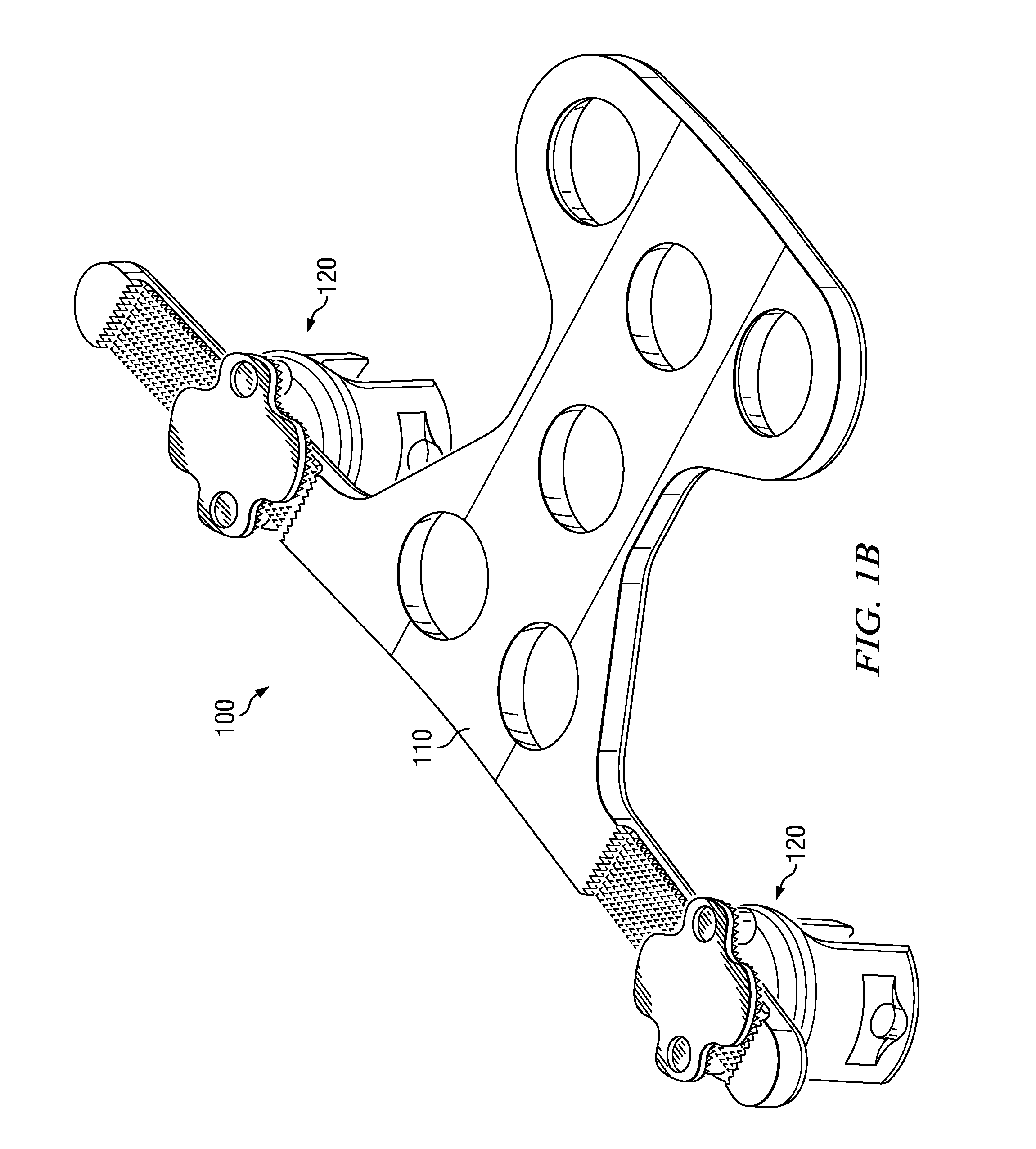Occipito-cervical fixation assembly and method for constructing same
a technology for occipitocervical and occipital nerves, which is applied in the field of orthopedic implantable device technology, can solve the problems of inability to provide desirable configurability options, difficulty in adjusting existing systems, and time-consuming adjustment, and achieve the effect of facilitating plate contouring
- Summary
- Abstract
- Description
- Claims
- Application Information
AI Technical Summary
Benefits of technology
Problems solved by technology
Method used
Image
Examples
Embodiment Construction
[0019]One embodiment of an implantable occipito-cervical fixation assembly 100 is illustrated in FIGS. 1A, 1B, and 1C. A top view of this embodiment is illustrated in FIG. 1A. A bottom view of this embodiment is illustrated in FIG. 1B. A cross-sectional view of this embodiment is illustrated in FIG. 1C. Occipital plate 110 supports one or more clamping assemblies 120. Although FIGS. 1A, 1B, and 1C illustrate embodiments with two clamping assemblies, embodiments with a single clamping assembly and embodiments with three or more clamping assemblies are contemplated. Occipital plate 110 may be secured to an occiput, and a stabilizing rod (not shown) may be secured in one or more clamping assemblies 120 to provide stabilization and / or promote fusion of the occipito-cervical junction.
[0020]Each clamping assembly 120 has at least two states: locked and unlocked. In its unlocked state, each clamping assembly 120 is movably attached to a portion of occipital plate 110, and may be adjusted p...
PUM
 Login to View More
Login to View More Abstract
Description
Claims
Application Information
 Login to View More
Login to View More - R&D
- Intellectual Property
- Life Sciences
- Materials
- Tech Scout
- Unparalleled Data Quality
- Higher Quality Content
- 60% Fewer Hallucinations
Browse by: Latest US Patents, China's latest patents, Technical Efficacy Thesaurus, Application Domain, Technology Topic, Popular Technical Reports.
© 2025 PatSnap. All rights reserved.Legal|Privacy policy|Modern Slavery Act Transparency Statement|Sitemap|About US| Contact US: help@patsnap.com



